The 256 students and 16 teachers at Ithunzi Primary School face water scarcity every day. Constantly searching for, collecting, and carrying water long distances leaves students exhausted.
The small rain tank (10,000 liters) on their school campus can't possibly hold enough water to meet all of their needs for drinking, cooking, handwashing, and cleaning the latrines. When it rains, which is infrequent in this semi-arid climate, the water collected is only enough to last them a few days.
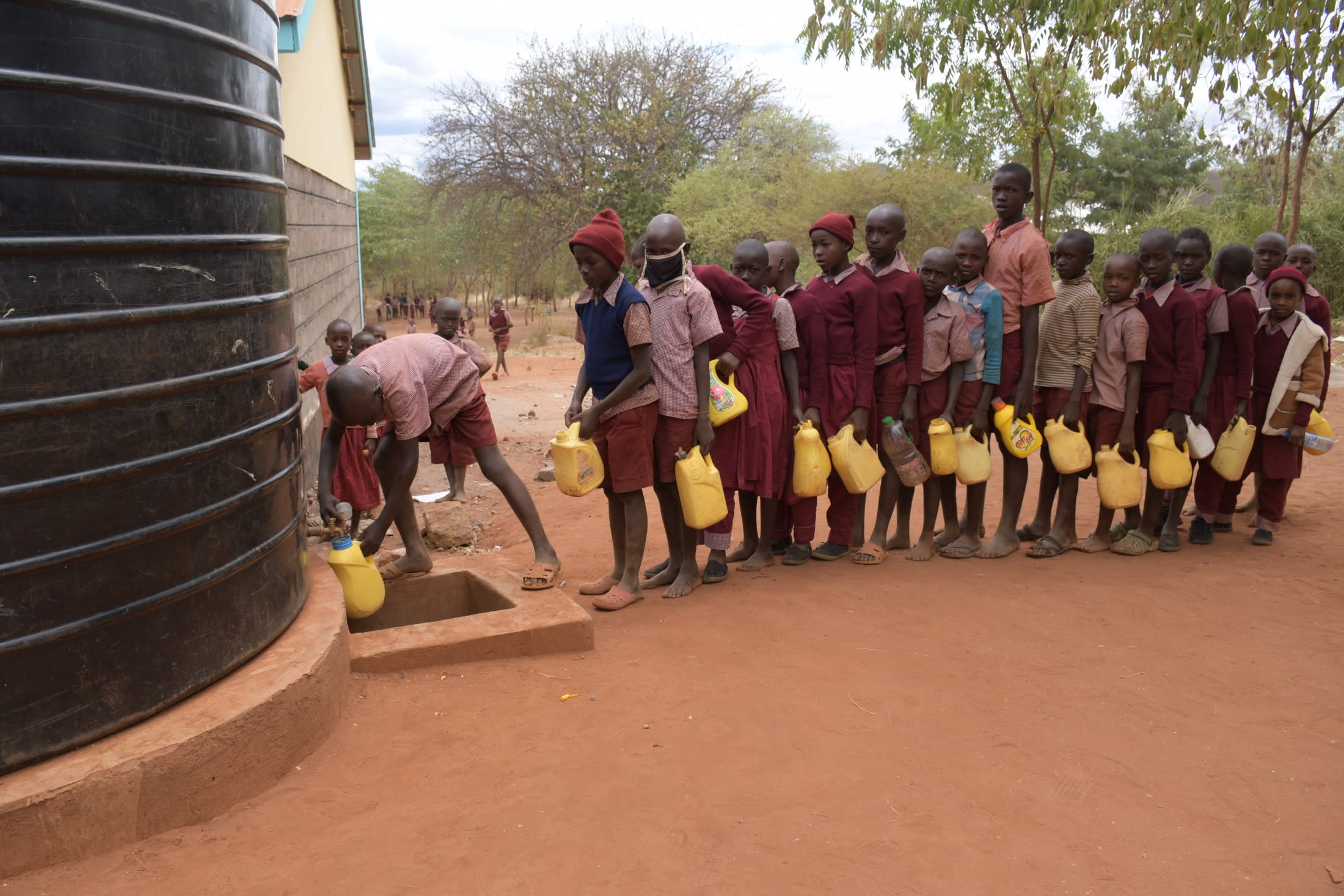
And when the tank does have water, the administration must ration portions per student to make it last as long as possible, leaving pupils thirsty even after waiting extended times in long lines for their turn (as shown above).
"We do not have a school feeding program, and we have to carry water from home. Thus, I am most hungry and thirsty in class due to the acute water shortage. We are also sent home to get water when we come to school empty-handed. Like last week when one of my classmates was sent home to acquire water and did not return until yesterday," said 14-year-old Rose K. (shown below).
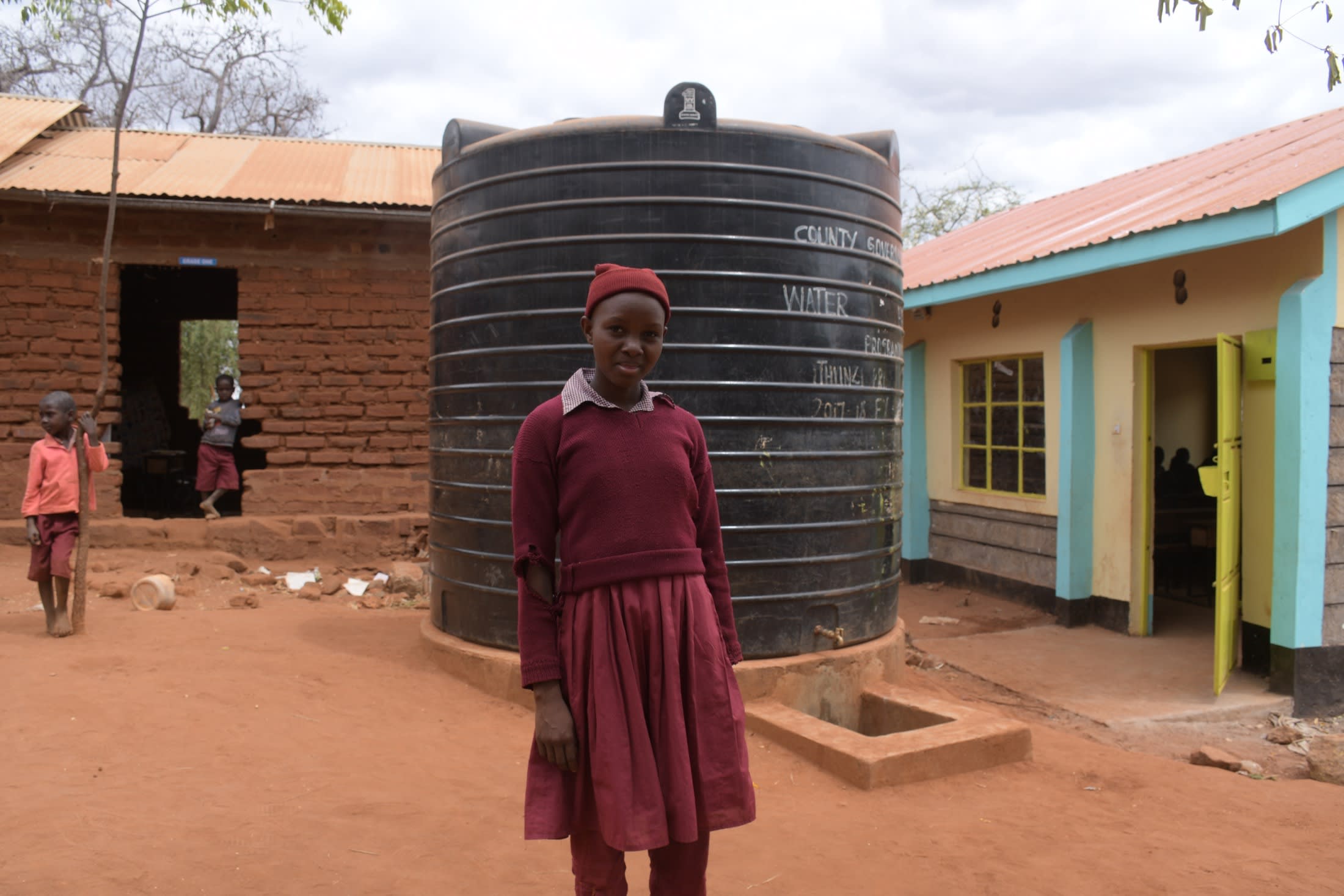
As Rose commented, students must collect water wherever they can find it and bring it to school with them. Most often, they resort to scoop holes dug in dry riverbeds (like the one shown below), but this requires walking kilometers before school even begins. As you can imagine, by the time they get to school, they are late and already exhausted, finding it hard to concentrate.
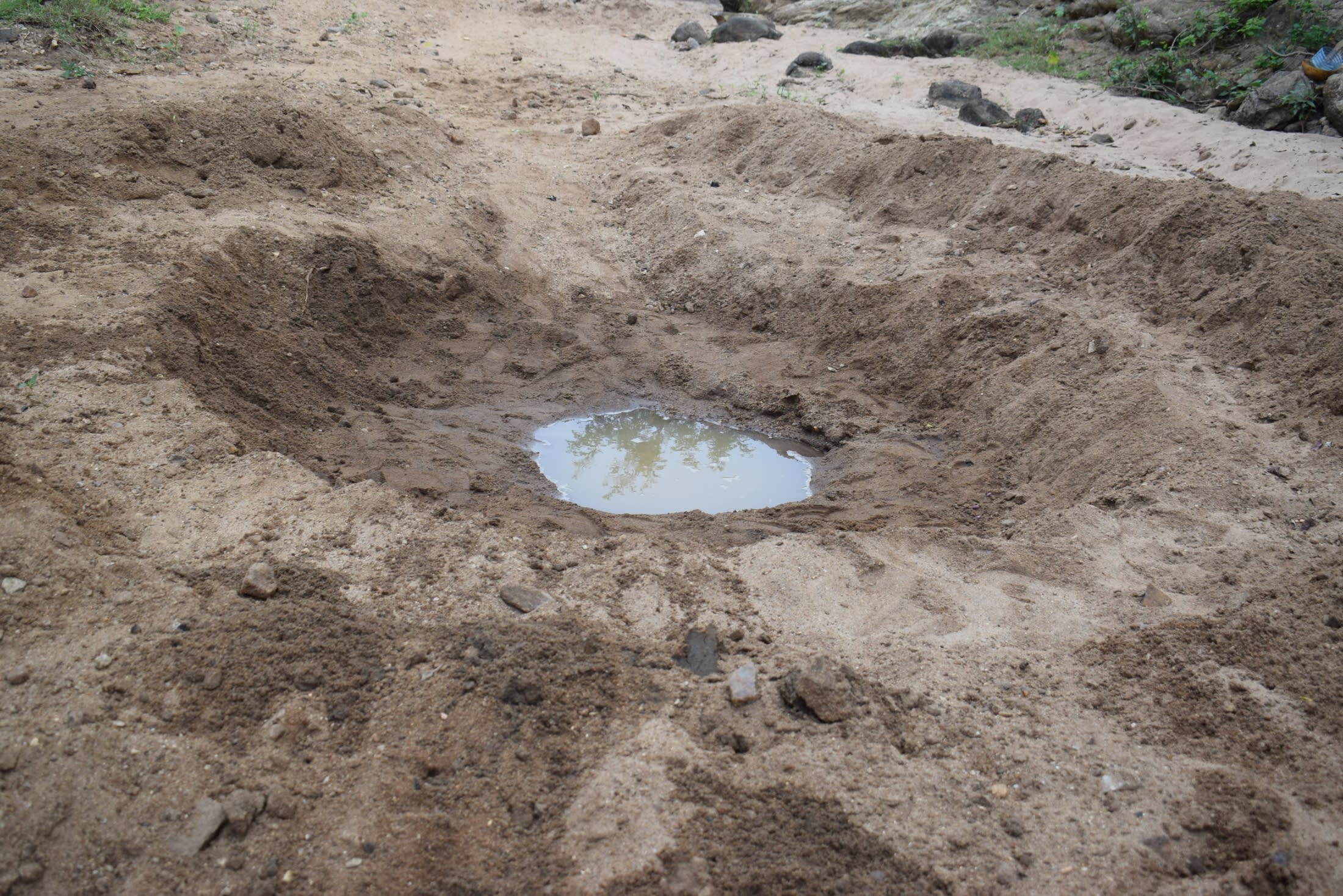
If they do manage to collect water at the scoop holes, which dry out quickly, the water found is less than ideal for drinking. It is muddy and often contaminated by both humans and animals, but they have no other options. Drinking dirty water leads to frequent cases of water-related infections like typhoid, amoeba, and dysentery for both students and staff, causing them to miss school.
The only other alternative when the scoop holes are dry is for students to walk to Kiambere Dam, which is four kilometers (2.5 miles) from the school and very far from most students' homes. Even if students muster up the energy to trek that far, they face another danger once they arrive. The area is infested with crocodiles, and collecting water there puts them at serious risk of injury or worse.
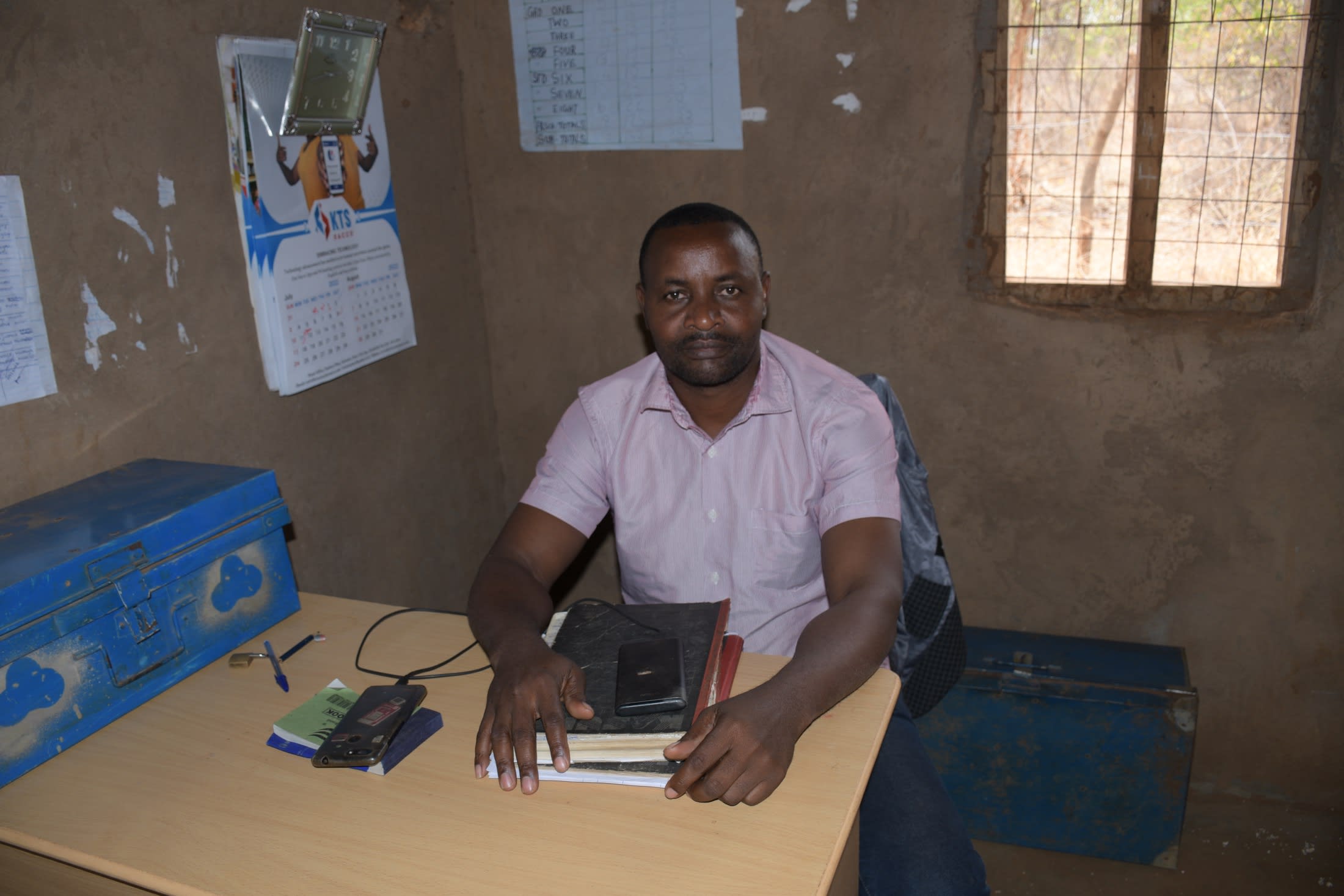
"I cannot perform my duties as required because we need the students to be in school, and most of them are usually absent due to lack of water at home or sickness. More than ten pupils are not in school today because of water-related reasons. The water in the school is also contaminated, and I cannot drink it. Students have often been diagnosed with typhoid and amoeba after drinking the water," said 42-year-old headteacher John Mutua Nzoka (shown above).
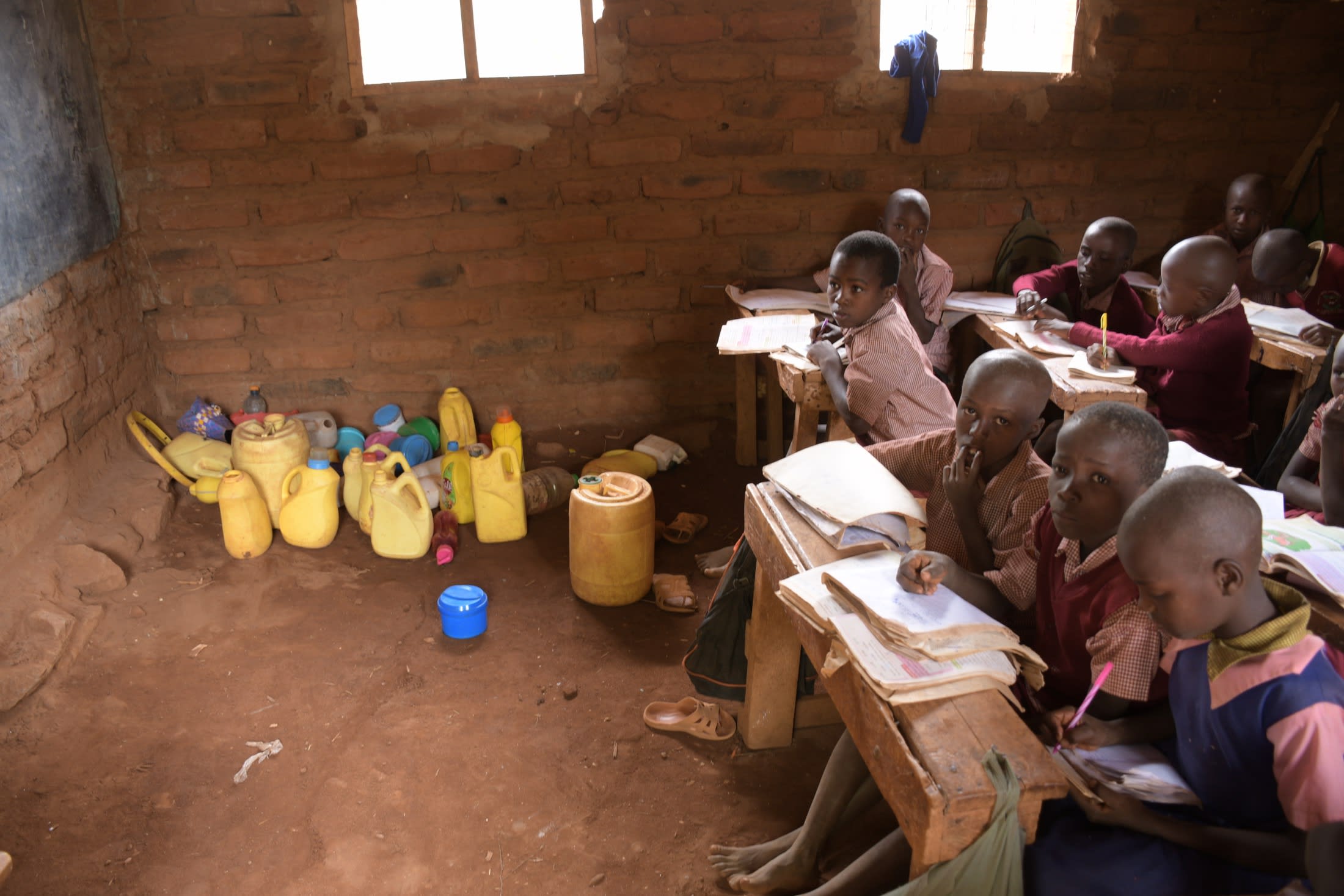
The students at Ithunzi Primary School need a reliable water source that can provide them easy, quick access to water so they can return to the classroom instead of wandering the community in search of water. And they also need access to clean water that will not make them ill, so they don't suffer needlessly and miss more valuable learning time.
Rain Tank
We will build a 104,000-liter rain tank for this school, making the others look tiny in comparison. Because of how rarely it rains in Southeastern Kenya, this tank's large volume is designed to store as much water as possible during the seasonal rains, making more water available through the dry months. This water will benefit the students, teachers, and supplementary staff.
Parents will mobilize the materials needed for construction, including sand, stones, and water. They will also lend their strength and time to help with the construction. We will complement their materials with a skilled artisan to lead the project in addition to providing the tools, lumber, metal, cement, and gutter system.
As soon as the tank has time to cure, it can begin collecting rainwater for the school's use.
Training
We will train students and staff on sanitation, hygiene, and other topics for 1 day. Those in attendance will form a school health club that will promote good hygiene and sanitation practices both at school and at home. They will learn all of the steps to proper handwashing, how to treat water, and how to keep their environment clean. The school will also be taught how to best oversee and maintain their new rain tank and handwashing stations.
Handwashing Stations
A total of 3 handwashing stations will be installed upon the project’s completion and before training. These are 1,000-liter plastic tanks fitted with 3 taps each, allowing 9 students to wash their hands at once. The student health club and school management will be responsible for making sure the tanks are filled with water and that a cleaning agent such as soap or ash is always available.







 Rainwater Catchment
Rainwater Catchment
 Rehabilitation Project
Rehabilitation Project



























